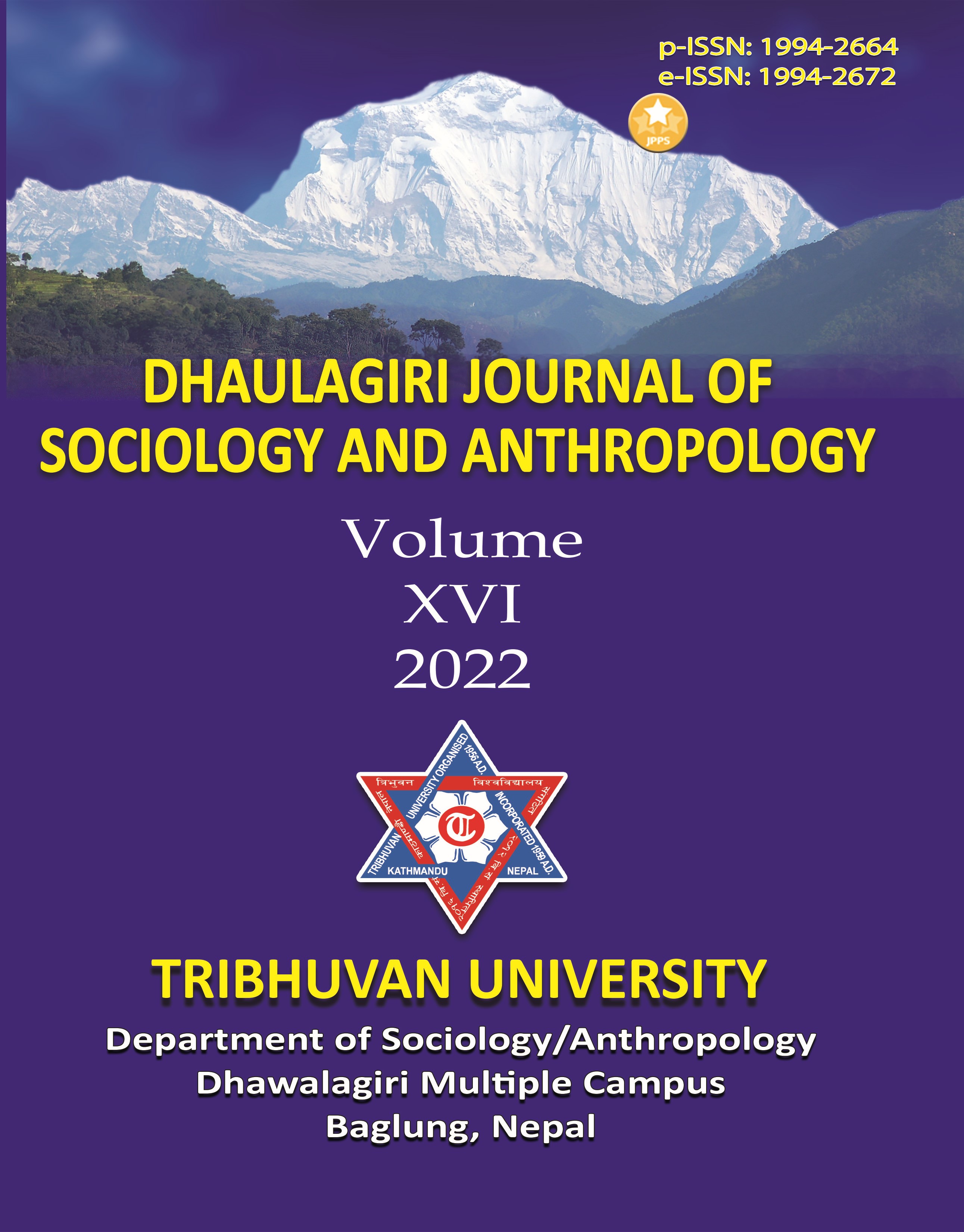Social Inequality and Ethnic Conflict in Nepal
DOI:
https://doi.org/10.3126/dsaj.v16i01.50916Keywords:
affirmative action, discrimination, inclusion, inequality.Abstract
Equality is perceived as the backbone of a democratic society. But inequality, whether horizontal or vertical and objective or perceived, exists even in a democratic society and Nepal is not an exception. The political mission of the Nepali state is to create an equal and inclusive society by eliminating all forms of discrimination and oppression created by the feudal, autocratic, centralized, and unitary state on the ground of origin, race, religion, caste, class, language, gender, and geographical specificities and protect and promote unity in diversity, social solidarity, and cultural harmony. To achieve its mission, the government has introduced various laws/bylaws and pursued various policy measures and development programs, such as social inclusion and affirmative action, as remedies for discrimination and inequality. However, these laws, policies, and programs have not led discriminated and marginalized communities to equality and social justice as they continue to remain discriminated against and unequal. In this paper, I argue that discrimination and inequality in Nepal is a structural problem, for Nepal is a hierarchically stratified society based on caste. In such a caste-based hierarchically stratified society, discrimination, inequality, and injustice cannot be removed easily without the state’s strong intervention with appropriate social measures. In this context, all laws/bylaws, policies, and programs initiated and introduced by the government are to mask the problems of discrimination and inequality and disguise indigenous peoples and marginalized communities. They are part of remedies, not an end-all cure. These partial remedies are neither adequate nor effective and appropriate to address grievances of historically discriminated indigenous and other marginalized communities. As a result, Nepal is still in a state of ethnic conflict. I have substantiated my arguments with empirical evidence (primarily qualitative data), which I have collected from ethnographic field research. I have also used quantitative data from secondary sources which is essential to supplement my qualitative data.
Downloads
Downloads
Published
How to Cite
Issue
Section
License
Copyright (c) 2022 Prof. Dr. Om Gurung

This work is licensed under a Creative Commons Attribution-NonCommercial-ShareAlike 4.0 International License.




